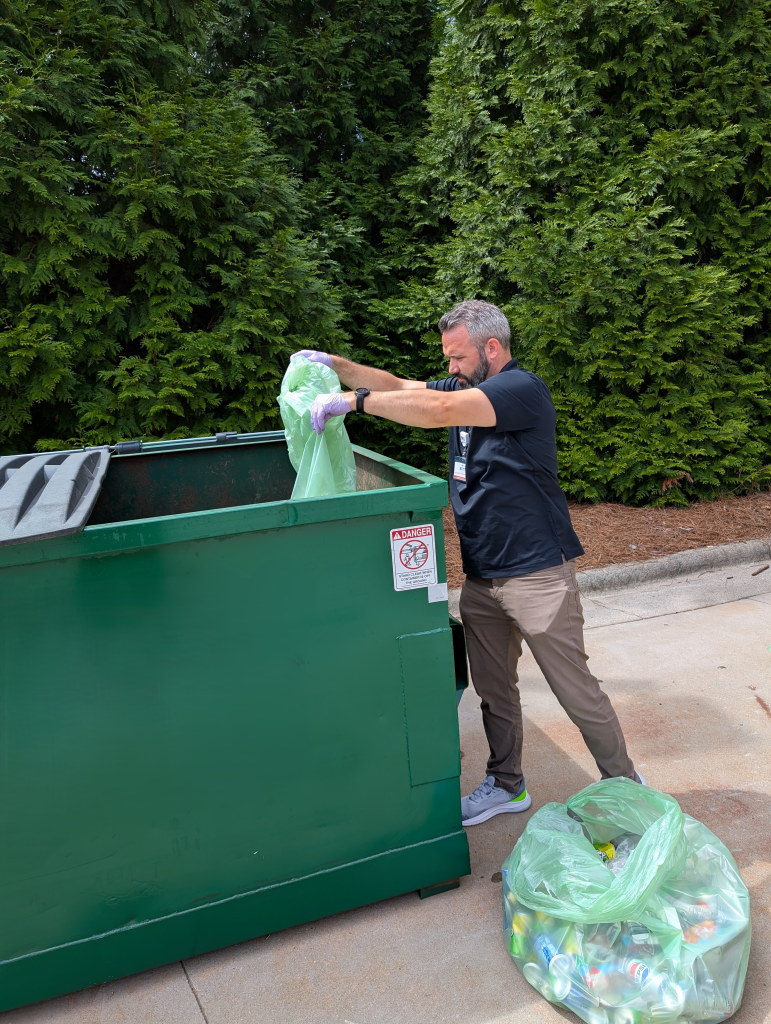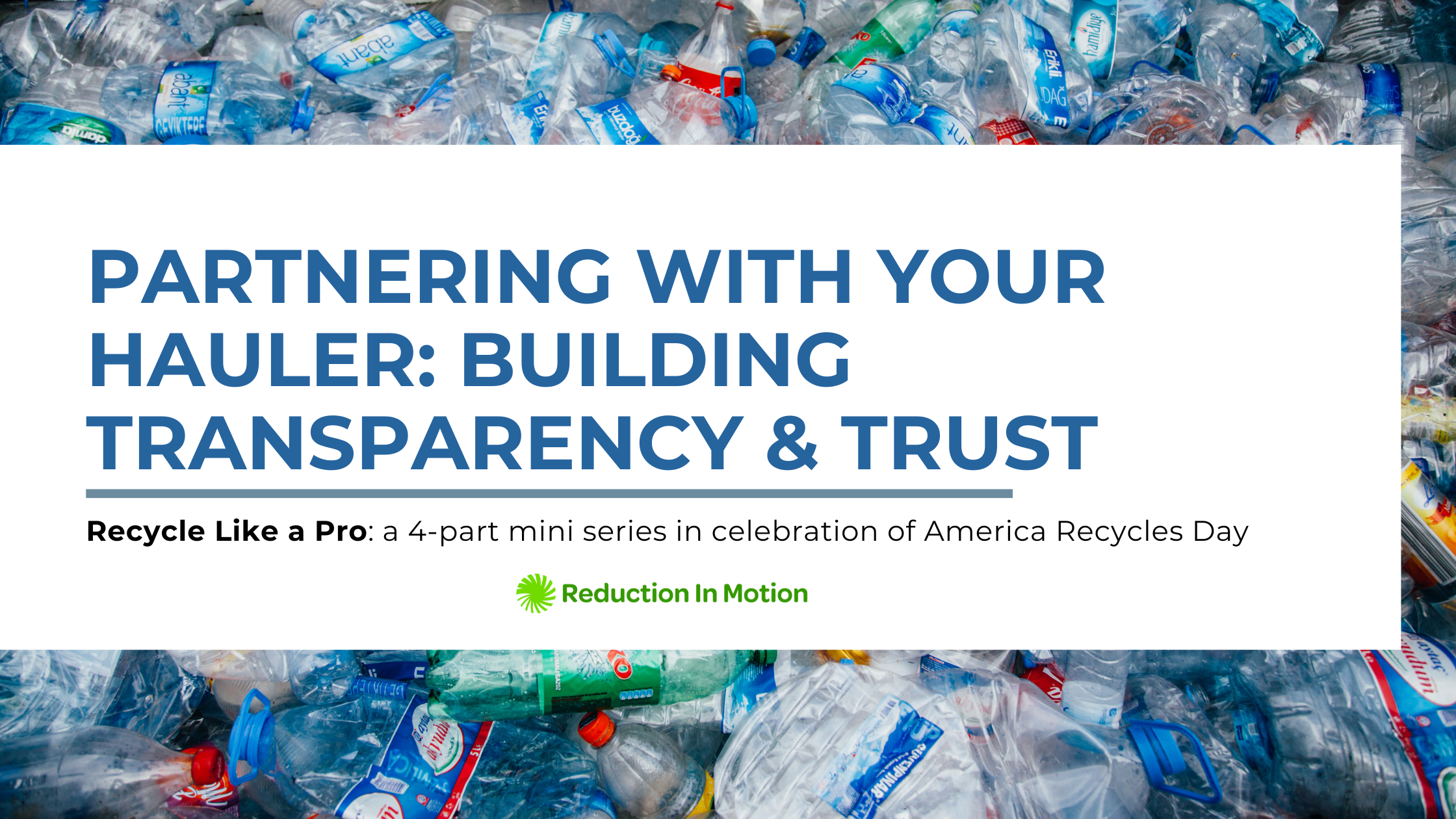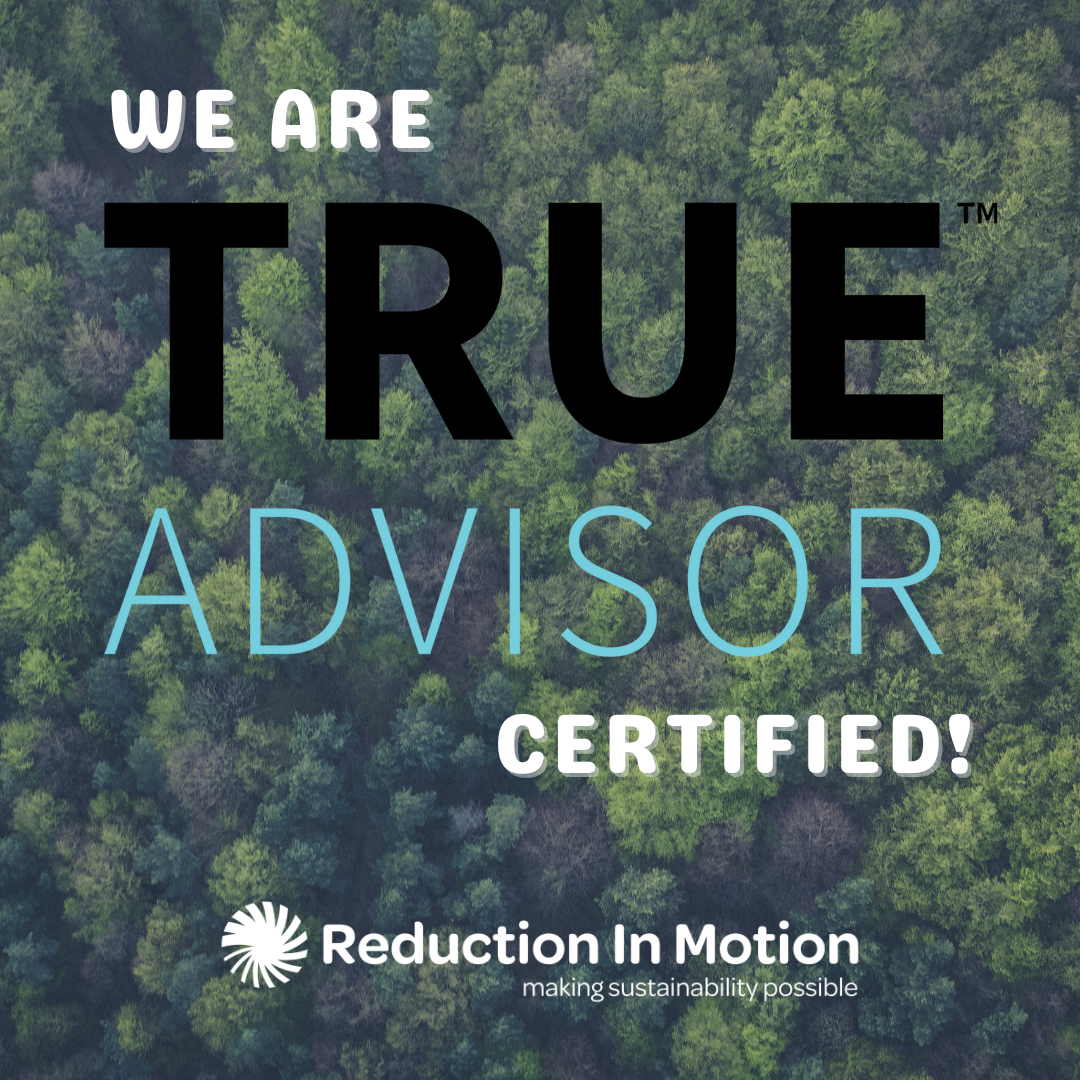Partnering with Your Hauler (Pt. 2)
Welcome to Part 2 of our How to Recycle Like a Pro mini-series. Last week, we explored the reality of recycling and why good intentions can sometimes backfire. If you missed Part 1 be sure to check it out here. This week, we’re focusing on transparency and why it’s essential for organizations and households to know exactly where their recycling goes after it leaves the bin.
Reduction In Motion’s Founder and Head Trash Talker, Bill Griffith, shares key insights on holding recycling partners accountable.
Why Transparency Matters
As a generator of waste, you are responsible for it from “cradle to grave.” That means even after your materials leave your site, you remain accountable for proper disposal… or any complications that arise later.
“Understanding where your materials go is a benefit to you,” Bill says. “You’re entitled to that information — you just need to ask for it.”

Red Flags to Watch For
Not all recycling programs are created equal. Bill highlights a few warning signs that your program may not be as effective as it seems:
- Bagged recyclables: Most facilities can’t process plastic bags as they jam equipment and slow sorting. Even if your hauler “accepts” them, bagged recyclables often end up trashed. Always empty items loose into the bin.
- Reluctance to share disposal information: You can and should ask for a disposal ticket showing where your material went. Lack of transparency is a red flag.
- Limited support for contamination issues: Many haulers now use cameras to document contamination. If your hauler doesn’t provide visual proof or work with you to reduce contamination, it may be time to reconsider your partnership.
“Work with your hauler as a partner, not just a service provider,” Bill emphasizes. “They should help you understand contamination and improve recycling performance.”

Questions to Ask Your Hauler
To build trust and verify recycling results, consider asking:
- Where does our material go? Request disposal tickets and confirmation from the MRF or transfer station.
- What’s the contamination rate? Transparency about rejected loads helps you identify improvement opportunities.
- Can you provide visual proof? Cameras on trucks can document contamination claims, ensuring you’re only charged for legitimate issues.
- How can we track diversion rates? Work with your hauler to get weights and transactional data for all waste streams — including cardboard, pallets, organic matter, and confidential paper destruction.
Data is Power
Understanding the weight and type of materials diverted from landfill is key to improving your recycling program. Transactional, itemized invoices allow you to calculate diversion rates accurately. Flat-rate fees may hide true performance, making it harder to optimize your sustainability efforts.
Final Thought
“Waste is always changing,” Bill notes. “If your hauler doesn’t understand your site, materials, and processes — or isn’t willing to work with you to maximize diversion — it’s worth reevaluating your partnership.”
Transparency isn’t just about accountability. It’s about building a strong, effective recycling program that actually makes an impact.
Continue to Part 3: From awareness to accountability. Learn how to turn recycling from a “check the box” task into a culture that lasts.

Our team of sustainability and waste consultants work together to develop content for our site. Contact us to learn more about something we’ve written about or would like us to focus on in the future.


